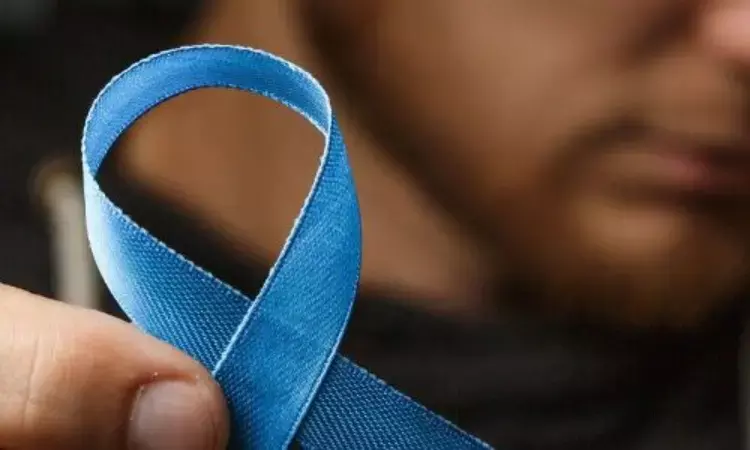- Home
- Medical news & Guidelines
- Anesthesiology
- Cardiology and CTVS
- Critical Care
- Dentistry
- Dermatology
- Diabetes and Endocrinology
- ENT
- Gastroenterology
- Medicine
- Nephrology
- Neurology
- Obstretics-Gynaecology
- Oncology
- Ophthalmology
- Orthopaedics
- Pediatrics-Neonatology
- Psychiatry
- Pulmonology
- Radiology
- Surgery
- Urology
- Laboratory Medicine
- Diet
- Nursing
- Paramedical
- Physiotherapy
- Health news
- Fact Check
- Bone Health Fact Check
- Brain Health Fact Check
- Cancer Related Fact Check
- Child Care Fact Check
- Dental and oral health fact check
- Diabetes and metabolic health fact check
- Diet and Nutrition Fact Check
- Eye and ENT Care Fact Check
- Fitness fact check
- Gut health fact check
- Heart health fact check
- Kidney health fact check
- Medical education fact check
- Men's health fact check
- Respiratory fact check
- Skin and hair care fact check
- Vaccine and Immunization fact check
- Women's health fact check
- AYUSH
- State News
- Andaman and Nicobar Islands
- Andhra Pradesh
- Arunachal Pradesh
- Assam
- Bihar
- Chandigarh
- Chattisgarh
- Dadra and Nagar Haveli
- Daman and Diu
- Delhi
- Goa
- Gujarat
- Haryana
- Himachal Pradesh
- Jammu & Kashmir
- Jharkhand
- Karnataka
- Kerala
- Ladakh
- Lakshadweep
- Madhya Pradesh
- Maharashtra
- Manipur
- Meghalaya
- Mizoram
- Nagaland
- Odisha
- Puducherry
- Punjab
- Rajasthan
- Sikkim
- Tamil Nadu
- Telangana
- Tripura
- Uttar Pradesh
- Uttrakhand
- West Bengal
- Medical Education
- Industry
SP-RASP and HoLEP have similar Outcomes for Prostatic Adenomas

In a recent study, Diego Aguilar Palacios and team assessed the perioperative outcomes of two minimally invasive surgical techniques for managing large prostatic adenomas: transvesical single-port robotic simple prostatectomy (SP-RASP) and holmium laser enucleation of the prostate (HoLEP) and found that both SP-RASP and HoLEP exhibit comparable favorable perioperative outcomes in the management of large prostatic adenomas. The findings were published in Urology Journal.
The study, conducted through a retrospective review of patients from 2019 to 2022, aimed to determine the advantages and disadvantages of each procedure for treating benign prostatic hyperplasia (BPH). They included a total of 50 patients who underwent SP-RASP and 90 patients who underwent HoLEP. All patients had preoperative prostatic volumes (PPV) greater than 80cm3. To estimate the percent of prostate adenoma removed (%PAR), researchers used the specimen weight normalized by the PPV. Univariate analysis was performed using Chi-square, Fisher’s exact, and Wilcoxon rank-sum tests, and a subgroup analysis with 1:1 matching for PPV was also conducted.
The findings revealed that the median PPV for SP-RASP was significantly higher than that of HoLEP (169cm3 vs. 129cm3, p<0.01). However, there was no significant difference in the median %PAR between the two techniques (57% for SP-RASP vs. 51% for HoLEP, p=0.10). Additionally, the overall rate of complications was similar in both groups, with 12% of HoLEP patients and 10% of SP-RASP patients experiencing complications (p=0.51).
One notable disparity was observed regarding same-day discharge rates, with 48% of SP-RASP patients discharged on the same day of the surgery compared to only 8% of HoLEP patients (p<0.01). The duration of foley catheter usage was also longer in SP-RASP patients, lasting six days on average, while HoLEP patients used the catheter for only one day (p<0.01). However, the success rate of the trial of void at the first attempt was similar in both groups, exceeding 94% (p=0.68).
Transient de-novo incontinence, although reported in both groups, occurred more frequently in HoLEP patients (28%) compared to SP-RASP patients (5%) (p<0.01). However, there were no significant differences in voiding parameters at the latest follow-up.
Source:
Palacios, D. A., Kaouk, J., Zeinab, M. A., Ferguson, E. L., Abramczyk, E., Wright, H. C., Pramod, N., & De, S. (2023). Holmium Laser Enucleation of the Prostate Versus Transvesical Single-Port Robotic Simple Prostatectomy for Large Prostatic Glands. In Urology. Elsevier BV. https://doi.org/10.1016/j.urology.2023.07.020
Neuroscience Masters graduate
Jacinthlyn Sylvia, a Neuroscience Master's graduate from Chennai has worked extensively in deciphering the neurobiology of cognition and motor control in aging. She also has spread-out exposure to Neurosurgery from her Bachelor’s. She is currently involved in active Neuro-Oncology research. She is an upcoming neuroscientist with a fiery passion for writing. Her news cover at Medical Dialogues feature recent discoveries and updates from the healthcare and biomedical research fields. She can be reached at editorial@medicaldialogues.in
Dr Kamal Kant Kohli-MBBS, DTCD- a chest specialist with more than 30 years of practice and a flair for writing clinical articles, Dr Kamal Kant Kohli joined Medical Dialogues as a Chief Editor of Medical News. Besides writing articles, as an editor, he proofreads and verifies all the medical content published on Medical Dialogues including those coming from journals, studies,medical conferences,guidelines etc. Email: drkohli@medicaldialogues.in. Contact no. 011-43720751


